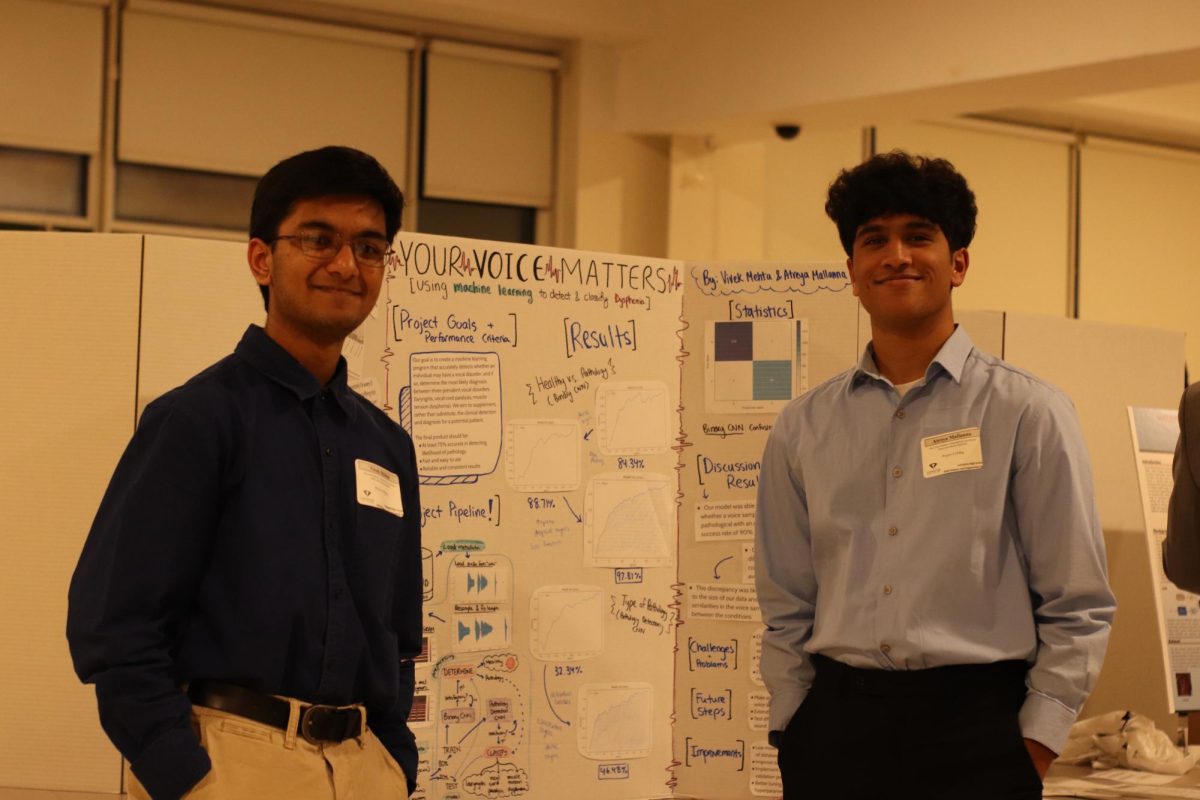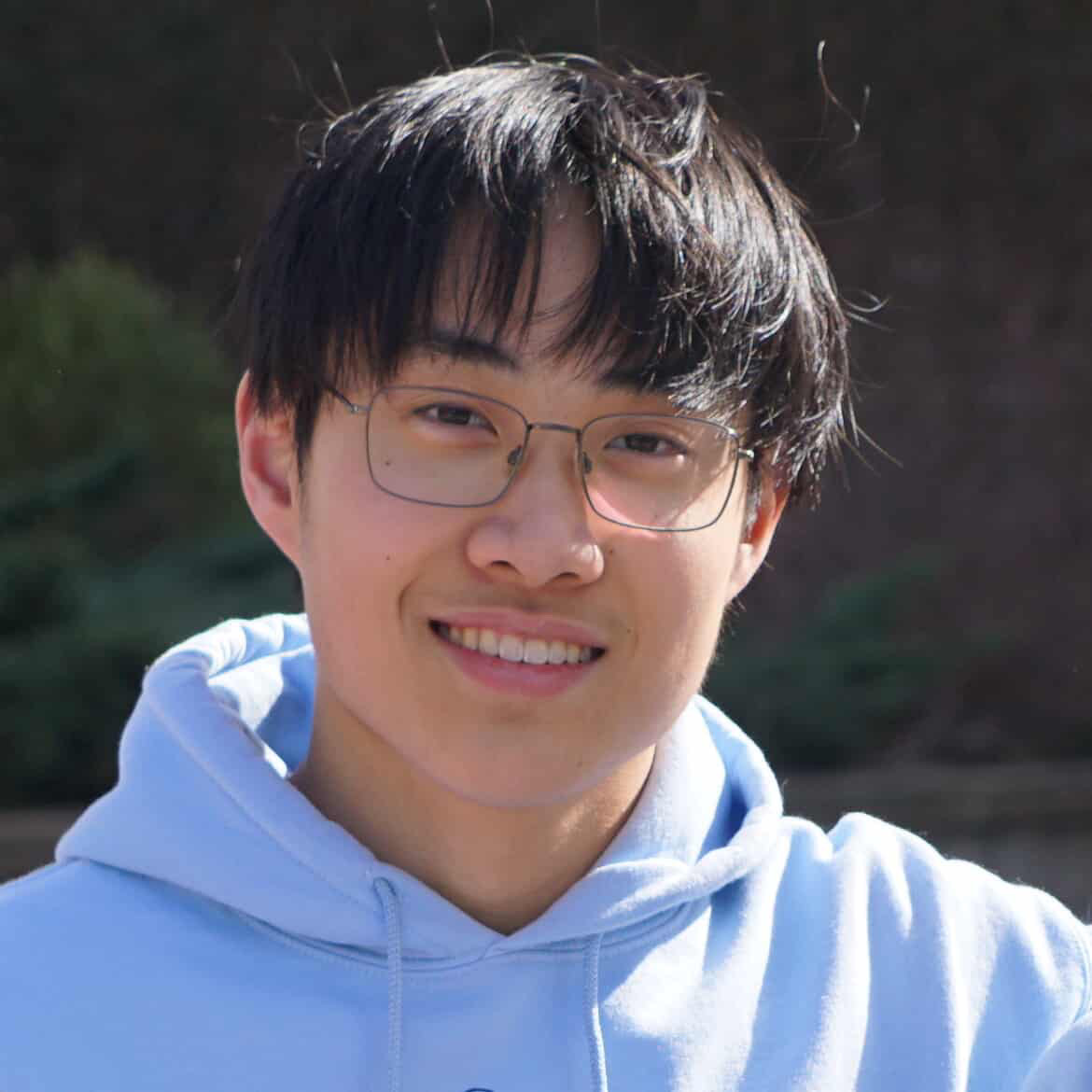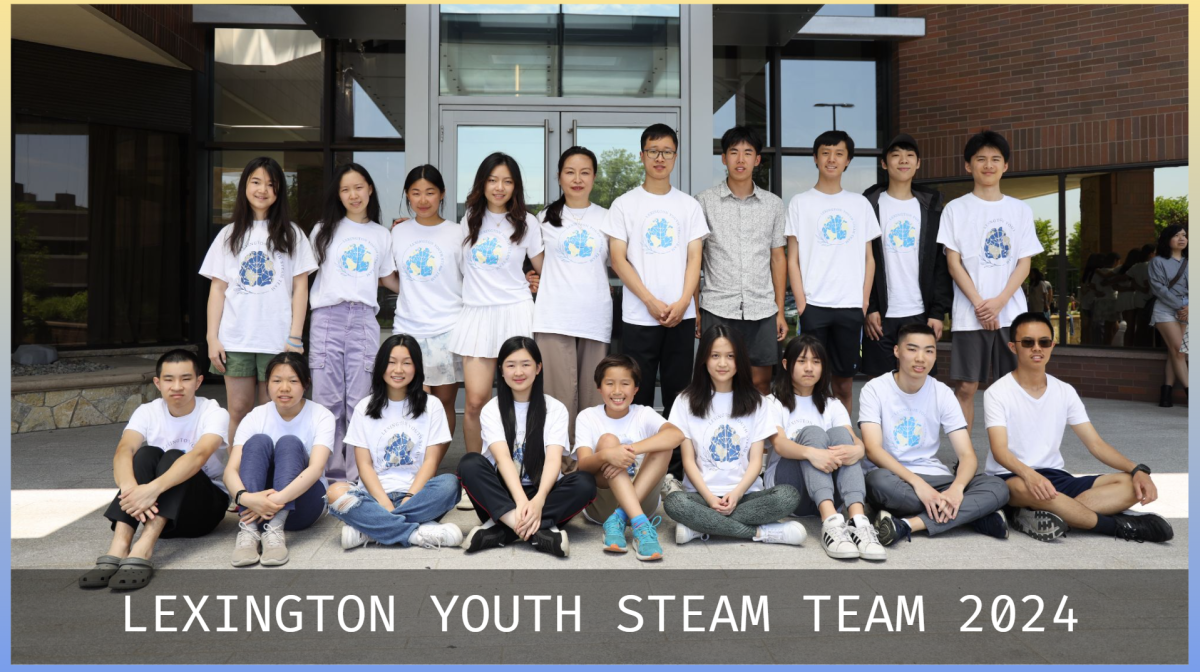On Wednesday, Feb. 14, Lexington High School held its annual science fair in Commons II, where students presented independent research projects on numerous scientific topics, including biology, physics, and robotics.
“[Students can choose] any topic in the STEM field about anything they are interested in wanting to find more about. They do an investigation and then they take the data, analyze the data, and make meaningful conclusions out of it,” Dr. Parul Kumar, a science fair coordinator and chemistry teacher at LHS, said.
The preparation process for the science fair begins in the fall. In September, registration forms and safety contracts are handed out during an informational meeting. After students’ initial proposals and research plans are approved, they begin researching, experimenting, and creating their project and presentation. Science teachers are also available to provide resources for students.
“Teachers are not supposed to help them in any way; that should be their work, but they can ask questions… We give them lab space if they want to work in our lab or something. They can take instruments like apparatus, glassware, and chemicals for experiments,” Kumar said.
After displaying their work at the LHS fair, students may qualify to present their projects at regional and international fairs.
“After doing the lectures fair, some students are granted permission to go to the regional fair. We have our regional fair at Tufts University. And then after that, certain kids can also go to the International Science and Engineering Fair (ISEF), which is actually a really good experience for students,” Kumar said.
ISEF is a fair that hosts over 80 nations around the world. At the fair, students have the opportunity to receive feedback from scientists who are leaders in their subject area.
Hania Matusik, who competed in ISEF last year, believes participating in the fair helps students gain a better understanding of their chosen subject.
“You give a presentation about your project. And then afterward, they ask you questions. The thing is that these questions are not just clarification questions, they are difficult. It causes you to think [deeper] and… it helps you with looking into future research,” Matusik said.
Matusik’s award-winning project was in the field of “soft robotics”; it consisted of a pneumatically controlled robotic hand piloted via a virtual reality headset. Such a device may be able to help assisted living facilities, disabled persons, and seniors. Matsuik credits the science fair for helping her discover her passion for assistive robotics, which she plans to continue studying and working with in college.
“[Robotics] was a combination of my passion for science, because I love science, but also my creativity and art skills,” Matsuik said.
Previously, this fair was a requirement for all AP science students. Now, it’s an optional opportunity for all students. Throughout the research and presentation process, participants gain an understanding of the scientific process.
“When you’re in graduate school or when you’re doing a PhD… you go to these conferences to present your research, and the science fairs [are] kind of similar. Another thing with judging is that it really helps you develop great presentation skills. … I was shy before, but now I feel like I’m definitely able to speak to people and present better,” Matusik said.
Matusik further emphasized the need for supporting students interested in the science fair. To get more people involved and popularize the LHS Science Fair, Matsuik has started a Science and Engineering Fair Club
‘It may seem overwhelming, but I think you just need a little push to get involved and a little bit of support,” Matsuik said.
Categories:
LHS’s Annual Science Fair
March 12, 2024
0
More to Discover



